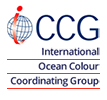The IOCCG bibliography is updated periodically when new references are submitted by readers, especially references that are published open access. Another useful ocean colour bibliography is the searchable Historic Ocean Colour Archive assembled by Marcel Wernand, with articles and books written between the 17th and early 20th century.
If you would like to submit a peer-reviewed open access publication to be included in the Ocean Colour Bibliography, please send the reference to Raisha Lovindeer using the following format: Lastname1, Initials1., Lastname2, Initials2., etc. (DATE). Full title of publication, Journal Abbreviation, Volume, Page numbers, DOI as a link. Please also check that the reference is not already in the database (search by first author). It is not necessary to send the PDF file as an attachment. Note that only peer-reviewed articles will be accepted.
If you would like to view recently-published papers, enter the current year in “Search by Keyword”. You can also search the database using keywords or the author’s last name. For papers dealing with Remote Sensing of Marine Litter and Debris, use the keyword “RSMLD”. You can also view the Datasets Bibliography for remote sensing and marine litter and debris.
Bibliography
Hamme,R.C., Webley, P.W., Crawford, W.R., Whitney, F.A., DeGrandpre,M.D. et al. (2010). Volcanic ash fuels anomalous plankton bloom in subarctic northeast Pacific. Geophys. Res. Lett. 37: L19604, doi:10.1029/2010GL044629 [Abstract]
Hamon, B.V. and Kerr, J.D. (1968). Time and space scales of variations in the east Australian current, from merchant ship data. Aust. J. Mar. Freshw. Res., 19: 101-106.
Hamre, B., Frette, O., Erga, S.R., Stamnes, J. J., and Stamnes, K. (2003). Parameterisation and analysis of the optical absorption and scattering coefficients in a Western Norwegian fjord – A case II water study. Appl. Opt., 42: 883-892.
Hamre, B., Winther, J.-G., Gerland, S., Stamnes, J. J., and Stamnes, K. (2004). Modeled and measured optical transmittance of snow covered first-year sea ice in Kongsfjorden, Svalbard. J. Geophys. Res., 109: d0i:10.1029/2003JC001926.
Han, L., Rundquist, D.C., Liu, L.L. and Fraser, R.N. (1994). The spectral responses of algal chlorophyll in water with varying levels of suspended sediment. Intl. J. Rem. Sens. 15: 3707-3718.
Hanke, G. and González-Fernández, D. (2014). Longterm deployment of the JRC Sealittercam on the Western Mediterranean Sea. In: Giannoudi, L., Streftaris, N. and Papathanassiou, E. (eds.) Policy‐oriented marine Environmental Research for the Southern European (PERSEUS) 2nd Scientific Workshop – Marrakesh 2014. Book of Abstracts.
Hansen, A., Ohde, T., Wasmund, N., (2014). Succession of micro- and nanoplankton groups in aging upwelled waters off Namibia. Journal of Marine Systems, 140, Part B, 130-137, DOI: 10.1016/j.jmarsys.2014.05.003.
Hansen, A., Ohde, T., Wasmund, N., (2014). Succession of micro- and nanoplankton groups in aging upwelled waters off Namibia. Journal of Marine Systems, 140, Part B, 130-137, DOI: 10.1016/j.jmarsys.2014.05.003.
Harding Jr., L.W., Itsweire, E.C. and Esaias, W.E. (1994). Estimates of phytoplankton biomass in the Chesapeake Bay from aircraft remote sensing of chlorophyll concentrations, 1989–92. Remote Sens. Environ., 49: 41-56.
Harding, L.W., Itsweire, E.C. and Esaias, W.E. (1992). Determination of phytoplankton chlorophyll concentrations in the Chesapeake Bay with aircraft remote sensing. Remote Sens. Environ., 40: 79-100.
Harding, L.W., Itsweire, E.C. and Esaias, W.E. (1995). Algorithm development for recovering chlorophyll concentrations in the Chesapeake Bay using aircraft remote sensing, 1989-1991. Photogramm. Eng. Rem. Sens., 61: 177-185.
Haris, N. D.; Said, M. S. M.; Rasam, A. R. A.; Ali, T. A. T.; Razali, R. (2023) Detection of plastic pollution in Rasau river using UAV imageries: An object-based classification approach. AIP Conf. Proc., vol 2881 (1), https://doi.org/10.1063/5.0168024
Harmel T., Hieronymi M., Slade W., Röttgers R., Roullier F. Chami M. (2016). Laboratory experiments for inter-comparison of three volume scattering meters to measure angular scattering properties of hydrosols. Opt Express, 24(2), A234-256, doi:10.1364/OE.24.00A234. [Full text]
Harmel, T., and M. Chami (2008). Invariance of polarized reflectance measured at the top of atmosphere by PARASOL satellite instrument in the visible range with marine constituents in open ocean waters. Optics Express, 16: 6064-6080.
Harris, G. P., Bukata, R. P. and Bruton, J. E. (1976). Satellite observations of water quality. Transp. Eng. J. ASCE. 102: 537-554.
Harris, G. P., Feldman, G. C. and Griffiths, F. B. (1993). Global Oceanic Production and Climate Change. In: Ocean Colour: Theory and Applications in a Decade of CZCS Experience, V. Barale and P. M. Schlittenhardt (eds.), Kluwer Academic Publishers, Dordrecht, The Netherlands, 237-270.
Hayashi, Y. (1980). Estimation of nonlinear energy transfer spectra by the cross-spectral method. J. Atmos. Sci., 37: 299-307.
Hays, G.C. and Lindley, J.A. (1994). Estimating chlorophyll a abundance from the ‘phytoplankton colour’ recorded by the Continuous Plankton Recorder survey: Validation with simultaneous fluorometry. J. Plankton Res., 168: 23-34.
He, M.X., Liu, Z.S., Du, K.P., Li, L.P., Chen, R., Carder, K. L., Lee, Z.P. (2000). Retrieval of Chlorophyll from Remote-Sensing Reflectance in the China Seas. Appl. Optics, 39(15) 2467-2474.
He, Q., and Chen, C. (2014). A new approach for atmospheric correction of MODIS imagery in turbid coastal waters: a case study for the Pearl River Estuary. Remote Sens. Lett. 5(3): 249–257. [Full text]
He, X., Y. Bai, D. Pan, C.-T. Chen, Q. Chen, D. Wang, and F. Gong (2013). Satellite views of seasonal and inter-annual variability of phytoplankton blooms in the eastern China seas over the past 14 yr (1998-2011), Biogeosciences, 10, 4721–4739. doi:10.5194/ bg-10-4721-2013. [Full text]
Hedley, J. B. Russell, K. Randolph and H. Dierssen (2016). A physics-based method for the remote sensing of seagrasses. Remote Sens. Environ. 174: 134-147.
Helmke, P., O. Romero, and G. Fischer (2005). Northwest African upwelling and its effect on offshore organic carbon export to the deep sea, Global Biogeochem. Cycles, 19: GB4015, doi: 10.1029/2004GB002265.
Hemmings, J.C.P., Barciela, R. M., Bell, M. J. (2008). Ocean color data assimilation with material conservation for improving model estimates of air-sea CO2 flux. Journal of Marine Research 66(1): 87-126.
Henderson, E.W. and Steele, J.H. (1993). Problems in the meso-scale interpretation of satellite chlorophyll data. Contin. Shelf Res.13: 845-861.
Hendiarti, N., Siegel, H., Ohde, T. (2004). Investigation of different coastal processes in Indonesian waters using SeaWiFS data. Deep-Sea Research II, 51: 85-97
Hengstmann, E., and Fischer, E. K.(2020) Anthropogenic litter in freshwater environments – Study on lake beaches evaluating marine guidelines and aerial imaging, Environ. Res., vol. 189, p. 109945, https://doi.org/10.1016/j.envres.2020.109945
Hengstmann, E., Gräwe, D., Tamminga, M., and Fischer, E. K.(2017). Marine litter abundance and distribution on beaches on the Isle of Rügen considering the influence of exposition, morphology and recreational activities, Mar. Pollut. Bull., 115, 297-306, https://doi.org/10.1016/j.marpolbul.2016.12.026
Henson, S.A., Dunne, J.P., and Sarmiento, J.L. (2009). Decadal variability in North Atlantic phytoplankton blooms. J. Geophys. Res., 114: C04013, doi:10.1029/2008JC005139
Herman, A., and Węsławski, J. M. (2022). Typical and anomalous pathways of surface-floating material in the Northern North Atlantic and Arctic Ocean, Sci. Rep., 12, 20521, https://doi.org/10.1038/s41598-022-25008-5.
Hestir, E.L., Brando, V.E., Bresciani, M., Giardino, C., Matta, E., Villa, P., Dekker, A.G. (2015). Measuring freshwater aquatic ecosystems: The need for a hyperspectral global mapping satellite mission. Remote Sensing of Environment, http://dx.doi.org/10.1016/j.rse.2015.05.023. [Full article].
Hidaka, M., Matsuoka, D., Sugiyama, D., Murakami, K., Kako, S. (2022). Pixel-level image classification for detecting beach litter using a deep learning approach, Mar. Pollut. Bull, 175, 113371, https://doi.org/10.1016/j.
Hieronymi, M., Bi, S., Müller, D., Schütt, E. M., Behr, D., Brockmann, C., Lebreton, C., Steinmetz, F., Stelzer, K., & Vanhellemont, Q. (2023). Ocean color atmospheric correction methods in view of usability for different optical water types. Frontiers in Marine Science, 10, 1129876. https://doi.org/10.3389/fmars.2023.1129876
Hieronymi, M., Macke, A., Zielinski, O. (2012). Modeling of wave-induced irradiance variability in the upper ocean mixed layer. Ocean Science 8: 103-120, doi:10.5194/os-8-103-2012 [Full article].
Hill, V., R. C. Zimmerman, W. P. Bissett, D. D. R. Kohler, and H.M. Dierssen (2014). Evaluating light availability and seagrass biomass and productivity using hyperspectral airborne remote sensing in Saint Joseph’s Bay, Florida. Estuaries and Coasts. DOI 10.1007/s12237-013-9764-3
Hirata T, Aiken J, Hardman-Mountford N, Smyth TJ, Barlow RG (2008). An absorption model to determine phytoplankton size classes from satellite ocean colour. Remote Sensing of Environment 112: 3153-3159.
Hirata, T. (2008). Estimation of the in situ Ultraviolet-A absorption of Seawater by a simple irradiance inversion model, Journal of Oceanography, 64(4): 561-566
Hirata, T. and Højerslev, N.K. (2008). Relationship between the irradiance reflectance and inherent optical properties of seawater. Journal of Geophysical Research, 113: (C03030) C03030:1-10
Hirata, T., Hardman-Mountford, N-J., Barlow, R., Lamont, T., Brewin, R., Smyth, T-J., Aiken, J. (2009). An inherent optical property approach to the estimation of size-specific photosynthetic rates in eastern boundary upwelling zones from satellite ocean colour: An initial assessment, Progress in Oceanography, 83: 393-397.
Hirata, T., Hardman-Mountford, N-J., Brewin, R-J-W., Aiken, J., Barlow, R., Suzuki, K., Isada, T., Howell, E., Hashioka, T., Noguchi-Aita, M. and Yamanaka, Y. (2011). Synoptic relationships between surface Chlorophyll-a and diagnostic pigments specific to phytoplankton functional types. Biogeosciences, 8: 311–327. [PDF File]
Hirata, T., N. Hardman-Mountford, J. Aiken, J. Fishwick (2009). Relationship between the distribution function of ocean nadir radiance and inherent optical properties for oceanic waters. Applied Optics, 48(17): 3130-3139
Hirawake, T., Satoh, H., Ishimaru, T., Yamaguchi, Y., and Kishino, M. (2000). Bio-optical relationship of case I waters: The difference between the low- and mid-latitude waters and the Southern Ocean. J. Oceanogr., 56: 245-260.
Hirawake, T., Takao, S., Horimoto, N., Ishimaru, T., Yamaguchi, Y., Fukuchi, M. (2011). A phytoplankton absorption-based primary productivity model for remote sensing in the Southern Ocean. Polar Biol 34:291–302 DOI 10.1007/s00300-010-0949-y [Download PDF]
Hlaing, S., A. Gilerson, R. Foster, M. Wang, R. Arnone, and S. Ahmed (2014). Radiometric calibration of ocean color satellite sensors using AERONET-OC data. Opt. Express, 22, 23385-23401. doi:10.1364/OE.22.023385
Ho, C-R., Zheng, Q. and Kuo, N-J. (2004). SeaWiFs observations of upwelling south of Madagascar: long-term variability and interaction with East Madagascar Current. Deep Sea Research. II. Topical Studies in Oceanography, 51: 59-67
Hochman, H.T., Müller-Karger, F.E. and Walsh, J.J. (1994). Interpretation of the coastal zone color scanner signature of the Orinoco River Plume. J. Geophys. Res., 99: 7443-7455.
Hoepffner, N. and Sathyendranath, S. (1992). Bio-optical characteristics of coastal waters: Absorption spectra of phytoplankton and pigment distribution in the western North Atlantic. Limnol. Oceanogr., 37: 1660-1679.
Hoepffner, N., Barker, T., Nykjaer, L., Estrada, M. and Schlittenhardt, P. (1994). Use of an analytical model to determine the primary production from satellite data in a coastal upwelling environment. Oceanol. Acta., 17: 431-442.
Hoepffner, N., Sturm, B., Finenko, Z. and Larkin, D. (1999). Depth-integrated primary production in the eastern tropical and subtropical North Atlantic basin from ocean colour imagery. Intl. J. Rem. Sens., 20: 1435-1456.
Hoge, F. E. and Lyon, P. E. (2005). New tools for the study of oceanic eddies: Satellite derived inherent optical properties. Remote Sensing of Environment 95, 444-452.


 The sixth International Ocean Colour Science (IOCS) meeting will take place in Darmstadt, Germany from 1 – 4 December 2025, hosted by EUMETSAT and ESA with support from other agencies.
The sixth International Ocean Colour Science (IOCS) meeting will take place in Darmstadt, Germany from 1 – 4 December 2025, hosted by EUMETSAT and ESA with support from other agencies.